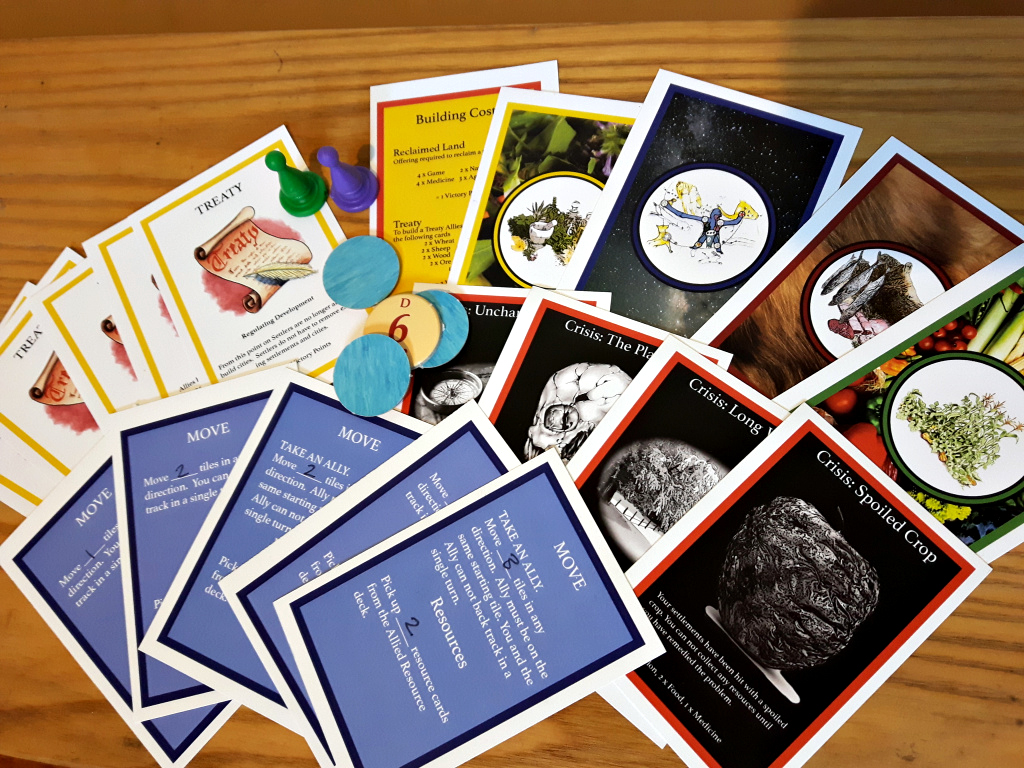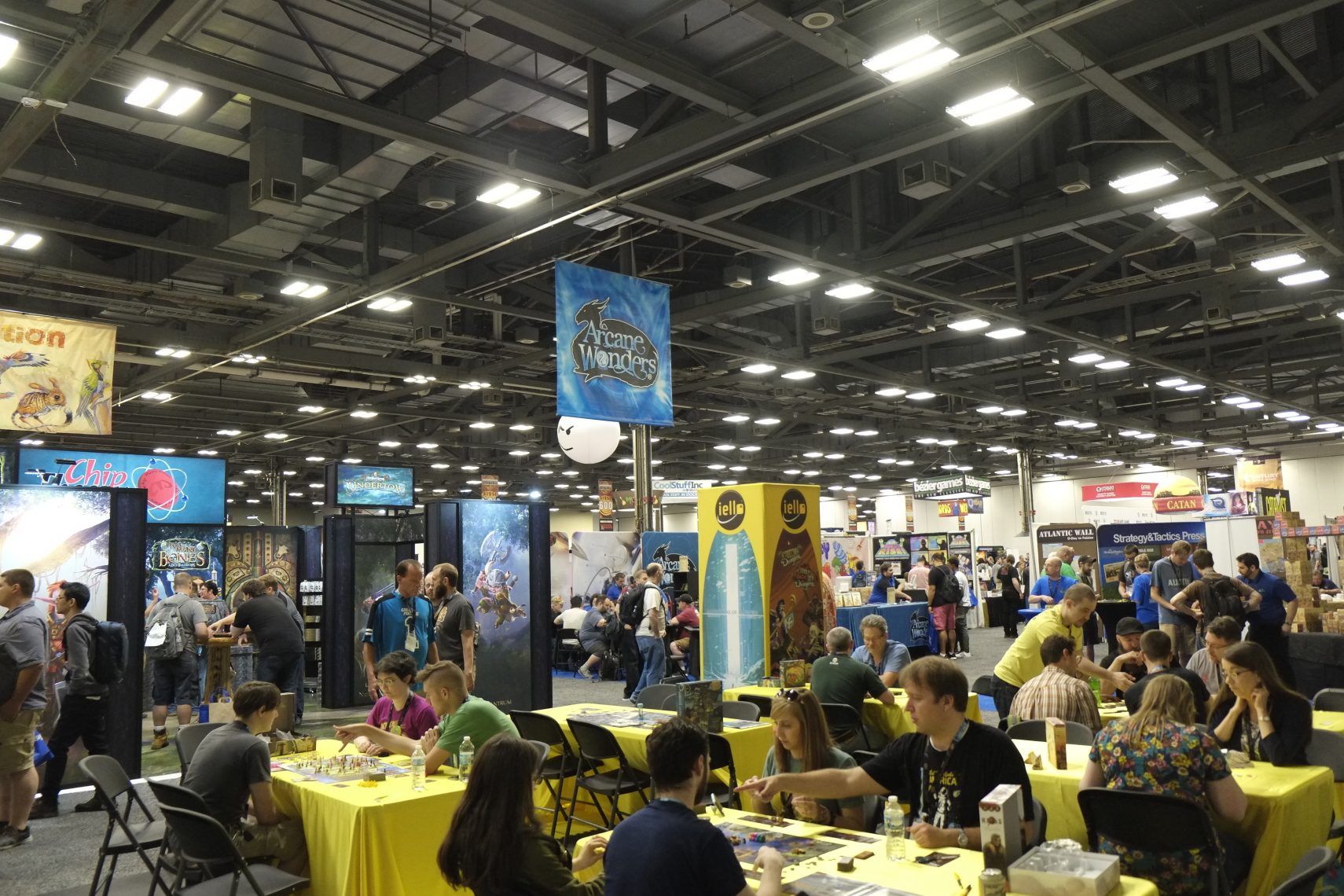Black-Designed Games to Buy: An Interlude and Interview with Evan Torner
I work on the campus of the University of Cincinnati (go Bearcats!) and discovered recently that we have a game design lab (officially called the UC Game Lab in the College of Arts and Sciences”) run by the delightful Dr. Evan Torner. We struck up a friendship, starting from my first cold-call asking about how we could partner to get more games from designers of color on the market, which at the time I thought would be just a year’s worth of work. Please have a sensible chuckle at my naiveté.
Evan teaches German and German Cinema at the university as his primary vocation, but among other things, he cofounded the Journal of Analog Game Studies (does what it says on the tin), Games on Demand (running small-press and independent games at conventions), the Golden Cobra Challenge (a design competition for freeform LARPs since 2014), and is an active member of the Indie Game Developer Network (IGDN) (offering scholarships, mentoring, and awards to a variety of indie designers). He runs classes at the university and workshops in the community with predominantly students of color to introduce gaming and encourage their excitement. And he’s been playing games his whole dang life. Evan and I sat down the other day so I could pick his considerable brain about how, on a practical level, we can support Black designers.

Why, I asked him, is it important to have Black, indigenous, and people of color as designers in our hobby in the first place? How are those voices valuable to you? He began by telling me about gaming in the 1990s, about Mike Pondsmith’s role playing games and his revolutionary ideas and that no one knew he was Black. He talked about Eric Lang who didn’t talk about his race for a long time either. He talked about how the gaming scene—RPGs, tabletop, everything—was a diverse but noninclusive space in those days: that is, all were welcome around those tables and no one was rejected because of their racial or gender identity, yet no one was allowed to talk about those things. Like talking about how much your salary is, folks just didn’t talk about it—culturally, it was understood to be at least awkward if not distasteful. And at conventions, BIPOC folks were separated from each other and placed at different tables in the name of diversity so that every white-dominated table could have a token person of color. Whether or not it was intentional, this prevented them from creating BIPOC-safe space at the events. When games that explored the Black experience came out like Steal Away Jordan by Julia Bond Ellingboe, well-meaning white folks got defensive. While some things have changed since the 90s, much of this experience is the same today.
Many, many folks have already written about the colonialism present in, even inextricable from, the corpus of Euro games. Who benefits from the narratives of things like Smallworld or Carnegie or even Catan? Who is missing from those narratives? We don’t want to think about how our privilege is built on something, on someone, how it was hidden from us, or we how acquiesced. Evan reminded me that some of the stories BIPOC designers might tell through a game will make us profoundly uncomfortable, like Liam Burke’s Dog Eat Dog, where one player is literally a colonizer, played by the person who is richer in real life, and the other the colonized. The game itself, according to Evan, is entirely unfair—the colonized “loses” every time. But this game plays through a narrative that we don’t often allow ourselves to engage with and the players can be richer for it.

It’s easy to point out the flaws in any particular group—we need to see and name out loud the wounds that racism has caused—but it’s also important to lean into the creative possibilities. We need to reconstruct not just deconstruct. Evan said to me, “If you don’t [intentionally raise up Black experiences], it’s a white supremacist space. If you include those voices, you’re including alternative forms of being and storytelling, it widens the range of things games can do and say, you’re advancing game design directly by including more voices and more perspectives. [You] show you’re a decent human being by welcoming them as they are rather than expecting them to change to fit your space.” Evan reminded me of something my acting teacher said years ago: this is not an acting problem, it’s an acting challenge. Choosing to pay attention to other voices than we have so far is an opportunity, not a problem—it can stir the pot, help create more interesting, more innovative, more emotionally and intellectually invigorating games.
And there are lots of designers of color already out there, but because of the de facto star designer system, we don’t see them. To be honest, it’s not just designers of color we don’t see—when Cole Wehrle or Uwe Rosenberg come out with a new game, we flock to them because we know them, we recognize what they’ll do is great, and that’s understandable in a hobby with expensive individual games. Risk-taking on a new designer is low, yet there are so many more people doing amazing, innovative, transformative things.
So, how do we see those things better? How do we invest in BIPOC designers? Evan suggests the first step is actually listening to and valuing people, not only in the gaming world, but everywhere. Taking seriously the stories our Black friends tell, listening without judgment or defensiveness. This reminds me of something I say in the antiracism class I teach: “Your experience is valid, but it is not universal.”
As I mentioned above, some of Evan’s work is to help increase game literacy—just like budding novelists who need to read a lot, developing designers need to play a lot. In his classes and workshops, one assignment is to design an additional rule or section for an existing game, sometimes something entirely from left field, simply to get their brains thinking creatively. We who are not designers might consider researching programs in our own towns that do similar work to which we could donate or we could consider starting gaming clubs at our local elementary or high school.
We can alter the spaces we’re already in—conventions, FLGS, game groups—to invite folks to be as they really are. We need to confront the active trolls who push people out because of gender, race, or ability, but we also need to recognize where we’ve been neutral. Neutrality is, in a practical sense, on the side of the status quo—when we don’t pay attention, when we lavish attention only on white and male designers, we are on the side of inertia, if not oppression. To be clear, because this is a common argument, I am not saying we shouldn’t support white and male designers—y’all, I’m late to the game, but that Reiner Knizia guy is pretty good! But sitting still and watching, not being intentional about inviting in more voices because we’re afraid of the blowback or of losing something we hold dear—that serves no one.
Streaming, according to Evan, is the most BIPOC growth-related space—live play, reviews, interviews, all with excellent content that side-steps the star-designer system. Supporting those streams on Patreon and, yes, by like/share/subscribe-ing makes a huge difference. It turns out that when a streamer hits 1000 subscribers, they suddenly get access to a tool kit that helps them manage the community, communicate with the subscribers, and get their message even more out there. An easy way to deepen our own knowledge of BIPOC gaming and to support them in a practical way is to unfollow folks with over a million subscribers and subscribe to those with less than 1000.

Relatedly, and perhaps obviously, there’s the question of class and of money. GenCon is $113 for a weekend pass as an attendee. Tables for designers are exorbitant. Lower income folks are necessarily excluded. Note: I am not conflating Black with poor but naming that there is significant overlap in the United States and specifically within our hobby. The games themselves are expensive which becomes a barrier for entry. The IGDN offers mentorships and scholarships to Metatopia, a convention in New Jersey for designers, but even without that, the tickets are more affordable at $90 for a designer and only $25 as a player! We can help by donating to that scholarship. We can attend Metatopia or Big Bad Con or Wiscon and playtest small-press and unknown games. We can investigate whether larger conventions have scholarships available for designers or players and donate to those funds. We can encourage designers and publishers of all sizes to offer free copies (sometimes called “community copies”) online or donated to schools. The key phrase here is “we can.”
By the end of our conversation, Evan and I were fired up—I’m hoping to attend the next Metatopia and I’ve messaged IGDN to see how I can support their work. These may be baby steps, but they’ll build on each other. There are so many possibilities out there to support designers of color and for our whole hobby to be enriched because of it. This is sort of the “yes, and…” that comes from the improv world: we’ve got some truly amazing games and designers already, so let’s add to the list!
Great article on an important topic. Keep sharing, keep listening, keep inviting BIPOC to the game table.